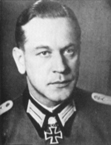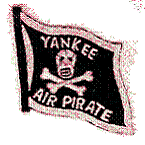YankeeAirRat
Posts: 633
Joined: 6/22/2005
Status: offline

|
That is the way to do it. In most of the UV campaigns that I have played the AI will go after Gilli Gilli. So if you move the bombers out of Central Australia and to the coast. Move as many fighters as you can to PM and move the B-25's, B-26's, and A-24's to PM as well. Set the B-25's, B-26's, and A-24's on strictly naval attack and nothing else. The same is true of your B-17's only have them on Naval Strike. PM in the opening isn't ready for the B-17's, but you can help by moving some of the smaller Aussie bases towards Townsville and moving the airfield support troops to Townsville and then shipping them to PM in a convoy. Another trick I use is to convert the Hudson's into strictly search and Port attack aircraft, use a search ratio that is comfortable for you; mine was usually 60-80 percent. They will help to localize the IJN carriers. Then you use your carriers to patrol near Gilli Gilli and wait for the expecting attack. Once you savage the IJN forces with all the naval attack units, and more than likely you will also sink the two invasion forces out there that are going to bases in New Guinea or at least damage them enough that it will stymie the AI. Post attack if your carriers survive but have damage use Townsville to refit until you can either get back down to the size 9 ports down south of Australia or over to New Caledonia. Also accept that your going to loose a carrier early on. It is awesome that you don't, but accept that it will happen. The best you can hope to get is a carrier heavily damage that it will have to go home to Pearl to be repaired and one that is only slightly damaged. The worst is loosing both. At which I suggest just rage quit and start again all over. 
If you survive with both carriers after that and are able to get in some good hits to have either a sinking or heavy damage to a IJN carrier. Then rest for a while and go on raids to the far east edge of the map with your carriers. Strike out about once a month against Shortland. Don't let the game plot a path because it will take you up the slot and that is a hellish place to be. Instead manually plot your movement to skirt the Santa Cruz Islands and get within range to harass Shortland. Spend a day or two on strikes and retire. That will usually bring out his surviving carriers and if you can get it away from the Betty's, the AI may out range you but you have a better punch with more aircraft. At times I have gotten lucky and the AI put a heavily damaged carrier into Rabual or even Shortland. Where it was easy to get at with either subs and LBA or subs and carrier air. The tide will turn against you in June since that is when the rest of the IJN carrier fleet arrives, the game assumes Midway doesn't happen in the Grand Campaign. So for a while it will be your two carriers against 6+ and there isn't anyway to survive. The most you can do is either try and land to retake Gilli Gilli (if it was captured) or escort convoys out of Brisbane to PM for the Australian land troops. As well build up the French Colonies at the other corner of the map with supplies and base units and turn that into a thorn to support operations up the Slot. Wait until you have built up enough reserves in carriers and ship and begin to strike out.
Attack like the history says, go and get the 'Canal, build up that base with fighters and bombers. Troll for his carriers to show up and hope you can get them enough with your land based air assets Build up PM so you can have a size 9 airfield there and plenty of support for all the aircraft.
That is how I have usually survived, but forcing attacks where I have advantages via both carrier planes and land based air. I have never been able to play too far into the grand campaign before real life takes over and I have to reset myself and start again, but usually by Dec of '42 that is my tactics. Oh and its gamey, but you can get good intel but switching sides and loading a save to see which ships are reported sunk. However, it has buoyed my plans to learn that I have sunk one or more carriers or heavily damaged one and sunk one and left one to survive so that I can move better with some ships. Finally, it does get better post September of 1942 when you start to receive TBM's to replace the TBDs and then in the spring of 43 you are expected to get Hellcats.
_____________________________
Take my word for it. You never want to be involved in an “International Incident”.
|
 Printable Version
Printable Version










 New Messages
New Messages No New Messages
No New Messages Hot Topic w/ New Messages
Hot Topic w/ New Messages Hot Topic w/o New Messages
Hot Topic w/o New Messages Locked w/ New Messages
Locked w/ New Messages Locked w/o New Messages
Locked w/o New Messages Post New Thread
Post New Thread